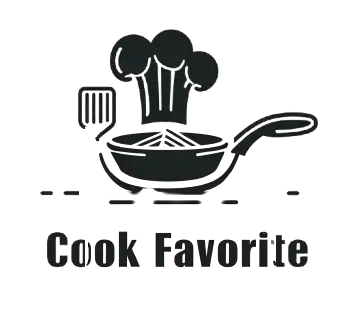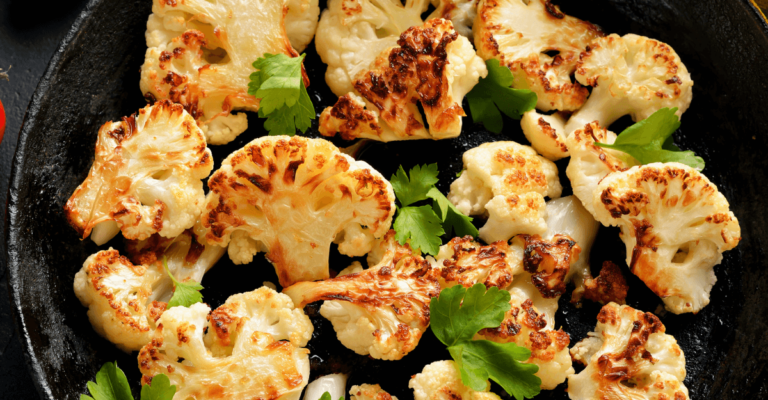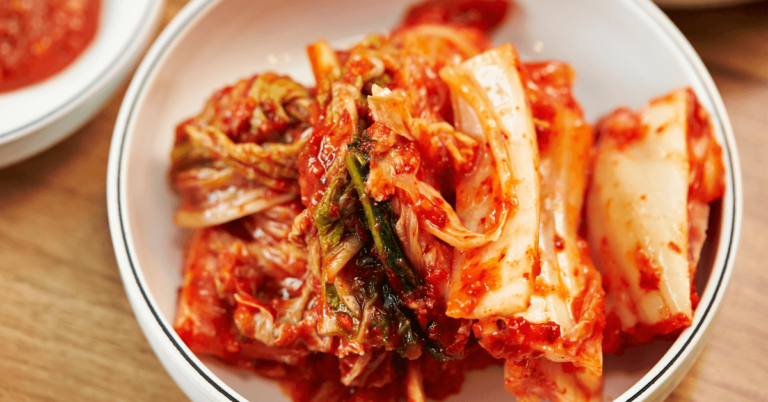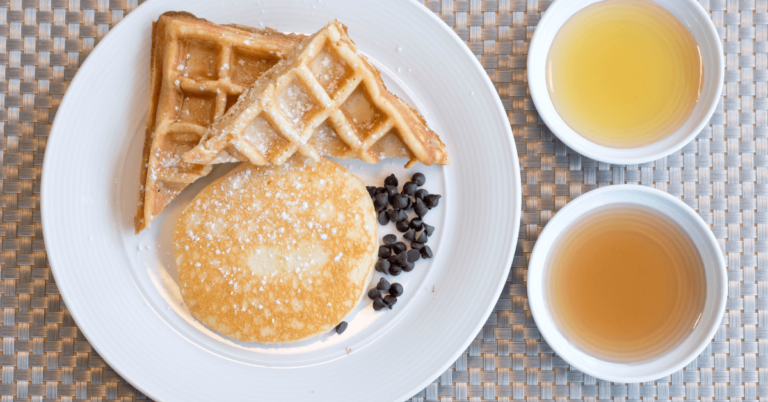Can You Use Water Instead of Milk for Pancakes? Exploring the Possibilities
Part 1: Introduction to Pancake Making
Ah, pancakes! It is a classic breakfast staple that has graced morning tables for ages. But have you ever found yourself ready to whip up a batch only to discover you’re out of milk? This predicament leads us to a fascinating question: Can you use water instead of milk in pancakes? Well, let’s dive into the delicious world of pancake-making to find out!
Historically, pancakes have been a symbol of simplicity in the culinary world. Originating from a time when ingredients were scarce, they embody the essence of making do with what’s available. In fact, the earliest pancakes were likely made with just flour, water, and a pinch of salt – no fancy ingredients or complicated techniques.
Fast forward to today, and we see a plethora of pancake recipes, each boasting its unique twist. But amidst this variety, one question often arises: “Can water truly replace milk in pancakes?” The answer is not just a simple ‘yes’ or ‘no’. It’s an exploration of taste, texture, and tradition.
In this comprehensive guide, we’ll embark on a culinary journey, tracing the roots of pancake making and unraveling the mysteries behind using water as a substitute for milk. Whether you’re a seasoned chef or a weekend kitchen warrior, this exploration will shed light on a new dimension of pancake preparation. So, grab your spatula, and let’s flip through the pages of pancake history and innovation!
Part 2: The Basics of Pancake Ingredients
Pancakes are a breakfast favorite, and their basic recipe is relatively straightforward. Typically, it includes flour, eggs, milk, sugar, baking powder, and a little salt. Each ingredient has its role, but what if we switch out milk, a key player, for water?
Milk’s role in pancakes goes beyond just adding liquid; it brings richness and a hint of sweetness. But using water instead of milk isn’t as unusual as you might think. Water can work well, especially when you amp up the other ingredients for flavor.
Why water? It’s perfect for those with dairy allergies or when you’re out of milk. But does it make a good pancake? The secret is in balancing the ingredients. While water lacks milk’s creaminess, it can still yield tasty pancakes. A little extra baking powder can help achieve the fluffiness usually provided by milk.
In the following sections, we’ll delve into how to make great pancakes with water, including tips to get them just right. Whether you’re a traditional pancake lover or open to new ideas, these basics will expand your pancake horizons. Let’s keep exploring this delicious journey!

Part 3: Making Pancakes with Water
Now that we’ve explored the basics let’s get into the nitty-gritty of making pancakes with water. You might wonder, “Can pancakes made with water be as fluffy and tasty as those made with milk?” Absolutely! With the proper technique and a few tricks, you can whip up delicious pancakes that might just surprise you.
Recipe for Water-Based Pancakes
Ingredients:
- 1½ cups all-purpose flour
- 1¼ cups water
- 3½ tsp baking powder
- 1½ tbsp sugar
- ½ tsp salt
- One egg
- 3 tbsp melted butter
- 1 tsp vanilla extract (optional)
Instructions:
- Mix Dry Ingredients: In a large bowl, whisk together the flour, baking powder, sugar, and salt.
- Add Wet Ingredients: Beat in the egg, melted butter, and gradually add the water. Mix until you have a smooth batter. If you’re using vanilla extract, add it now.
- Let the Batter Rest: Allow the batter to sit for about 3-4 minutes. This helps the baking powder activate, contributing to fluffier pancakes.
- Cook the Pancakes: Heat a non-stick pan or griddle over medium heat. Lightly grease it with butter or oil. Pour a scoop of batter onto the pan. Cook until bubbles form on the surface, then flip and cook until golden brown.
Tips for Perfect Water-Based Pancakes
- Batter Consistency: The key to great pancakes is the batter consistency. It should be smooth but not too runny. If it’s too thick, add a bit more water.
- Flavor Enhancements: Since water doesn’t add flavor like milk, consider adding vanilla extract or a dash of cinnamon to the batter for a flavor boost.
- Cooking Temperature: Keep the heat at medium. Too high, and the pancakes will burn; too low, and they won’t cook through properly.
So, there you have it – a simple yet effective recipe for making pancakes with water. These pancakes are not just a workaround for when you’re out of milk; they’re a testament to the versatility of pancake recipes. Give it a try, and you might find yourself pleasantly surprised by how good water-based pancakes can be!
Part 4: Textural Differences Between Milk and Water Pancakes
When it comes to pancakes, texture is everything. A common question is, “How does using water instead of milk change the texture?” Let’s break it down.
Texture with Milk
Milk makes pancakes soft and fluffy. It adds moisture and a bit of richness, giving them a light and airy feel.
Texture with Water
Water-based pancakes are a tad firmer and denser. They lack the creaminess of milk, but with the proper technique, they can still be quite fluffy.
Tips for Fluffy Water Pancakes
- Don’t Overmix: This keeps them from getting tough.
- Rest the Batter: A few minutes of rest helps the batter rise better.
- Watch the Heat: Cook them on medium heat for even cooking.
In short, while milk and water pancakes have their differences, with a few tricks, water-based pancakes can be just as enjoyable. It’s all about the approach and a tiny kitchen magic!
Part 5: Flavor Considerations
While texture is crucial, flavor is the soul of a pancake. A common concern when substituting milk with water is, “Will the pancakes still taste good?” The answer lies in understanding how milk affects flavor and how to compensate when using water.
Flavor with Milk
Milk adds a subtle sweetness and richness to pancakes, enhancing their overall taste. It complements the flour and eggs, creating a balanced flavor profile that’s hard to beat.
Flavor with Water
Water, being neutral, doesn’t contribute any flavor. This might sound like a downside, but it’s actually an opportunity to get creative with other ingredients.
Enhancing Flavor in Water-Based Pancakes
- Add Extracts: Vanilla or almond extract can add depth to your pancakes.
- Use Sweeteners: A bit more sugar or even honey can boost the sweetness.
- Spice It Up: Cinnamon or nutmeg can add a warm, inviting flavor.
- Top It Off: Don’t forget toppings! Fresh fruits, syrups, or a dollop of yogurt can make a big difference.
In essence, while water doesn’t bring the inherent richness of milk to pancakes, it opens the door to a variety of flavors. By experimenting with different additions, you can create water-based pancakes that are not just a substitute but a delightful variation in their own right. So, go ahead and play with flavors – your perfect pancake might just be waiting to be discovered!
Part 6: Nutritional Comparison
Switching milk for water in pancakes doesn’t change the taste and texture; it also affects their nutritional value. Let’s look at how this substitution impacts the nutritional content.
Nutrition in Milk-Based Pancakes
Milk adds protein, calcium, and a bit of fat to pancakes. These nutrients are excellent for bone health and keep you fuller for longer.
Nutrition in Water-Based Pancakes
Pancakes made with water have fewer calories and almost no fat. They’re lighter but also have less protein and calcium.
Balancing Nutrition
- Protein: Add a protein boost with toppings like Greek yogurt or nut butter.
- Calcium: Pair your pancakes with calcium-rich foods or a fortified drink.
- Calories: Water pancakes are a good choice for those watching their calorie intake.
In short, water-based pancakes are a healthier, lower-calorie option. With some intelligent toppings and sides, you can make a nutritious and delicious meal. It’s all about finding the right balance for your dietary needs!
Part 7: Vegan and Dairy-Free Alternatives
Adapting pancake recipes for vegan and dairy-free diets is increasingly popular. When milk is off the menu, water isn’t the only alternative. Let’s explore some delicious options that cater to these dietary needs.
Vegan-Friendly Pancake Recipes
Vegan pancakes exclude all animal products, meaning no eggs or dairy. Here’s a simple tweak to the water-based pancake recipe to make it vegan:
- Replace the egg with a flax egg (1 tbsp ground flaxseed mixed with 3 tbsp water).
- Use plant-based butter or oil instead of regular butter.
Dairy-Free Alternatives to Milk
For those avoiding dairy but not all animal products, there are several milk alternatives:
- Almond Milk: Adds a nutty flavor and is lower in calories.
- Soy Milk: Richer in protein, mimicking the consistency of cow’s milk.
- Coconut Milk: Adds a tropical twist and richness to the pancakes.
Nut Milk and Other Substitutes
Nut milk like cashews or macadamia can also be used, each bringing its unique flavor. Oat milk is another excellent choice, especially for those with nut allergies. It’s creamy and has a mild, slightly sweet taste.
In summary, whether you’re vegan, dairy-free, or just looking to try something new, there are plenty of alternatives to milk in pancakes. Each substitute brings its unique flavor and texture to the table, making pancakes an exciting and inclusive culinary adventure. So, go ahead and experiment – the perfect dairy-free or vegan pancake recipe is waiting for you!
Part 8: Common Mistakes and Solutions
Making pancakes seems straightforward, but a few common pitfalls can affect the outcome. Whether using water, milk, or a milk alternative, being aware of these mistakes can help you achieve pancake perfection.
Mistake 1: Overmixing the Batter
Overmixing is a standard error that leads to tough, chewy pancakes. When you overmix, the gluten in the flour develops too much.
Solution: Mix your batter just until the ingredients are combined. It’s okay if there are a few lumps – they’ll cook out!
Mistake 2: Incorrect Batter Consistency
Another issue is getting the batter consistency wrong. Too thick, and your pancakes will be dense; too runny, and they’ll spread too much and be thin.
Solution: Aim for a thick but pourable batter, like a slightly runny yogurt. If it’s too thick, add more liquid; if it’s too runny, add more flour.
Mistake 3: Cooking at the Wrong Temperature
Cooking pancakes at the wrong temperature can ruin them. They are too hot and burn on the outside while staying raw inside; they are too low and won’t cook properly.
Solution: Preheat your pan or skillet on medium heat. You can test it by sprinkling a few drops of water on it – they should dance and sizzle but not evaporate instantly.
Mistake 4: Flipping Pancakes Prematurely
Flipping pancakes too soon can lead to a mess. They might break apart or not form properly.
Solution: Wait until bubbles form on the surface and the edges look set. Then, gently slide your spatula underneath and flip.
In conclusion, you are making perfect pancakes, whether with water, milk, or a dairy-free alternative, is all about avoiding these common mistakes. With these solutions, you’re well on your way to making delicious, fluffy pancakes every time. Remember, practice makes perfect, so don’t be afraid to experiment and find what works best for you!
Part 9: FAQs
Switching to water in pancakes often raises questions. Here are some quick answers to common queries to help you master your pancake-making skills.
Do Water-Based Pancakes Last Longer?
Answer: Yes, they can. Water-based pancakes have fewer perishables than milk-based ones. But for the best taste, eat any pancakes within a few days.
How Do Milk Alternatives Like Almond or Soy Milk Stack Up Against Water?
Answer: Almond milk brings a nutty flavor and fewer calories, while soy milk offers more protein. They’re great 1:1 substitutes for water or cow’s milk in recipes.
Tips for Fluffy Water Pancakes?
Answer: Don’t overmix the batter; let it rest before cooking, and use more baking powder. Cook on medium heat for the best results.
Do Water Pancakes Need Special Toppings?
Answer: Not really, but feel free to try richer toppings like fruit compotes or flavored syrups to enhance the flavor.
Are Water Pancakes Healthier?
Answer: Yes, they’re lower in calories and fat. Just watch your toppings and portions for a healthier option.
Can I Make Them Gluten-Free?
Answer: Sure! Use a gluten-free flour blend. Adjust the water amount as needed, as gluten-free flours vary in absorption.
In short, using water in pancakes is a versatile option that caters to various dietary needs and preferences. With these FAQs, you’re ready to experiment and enjoy delicious pancakes your way!






